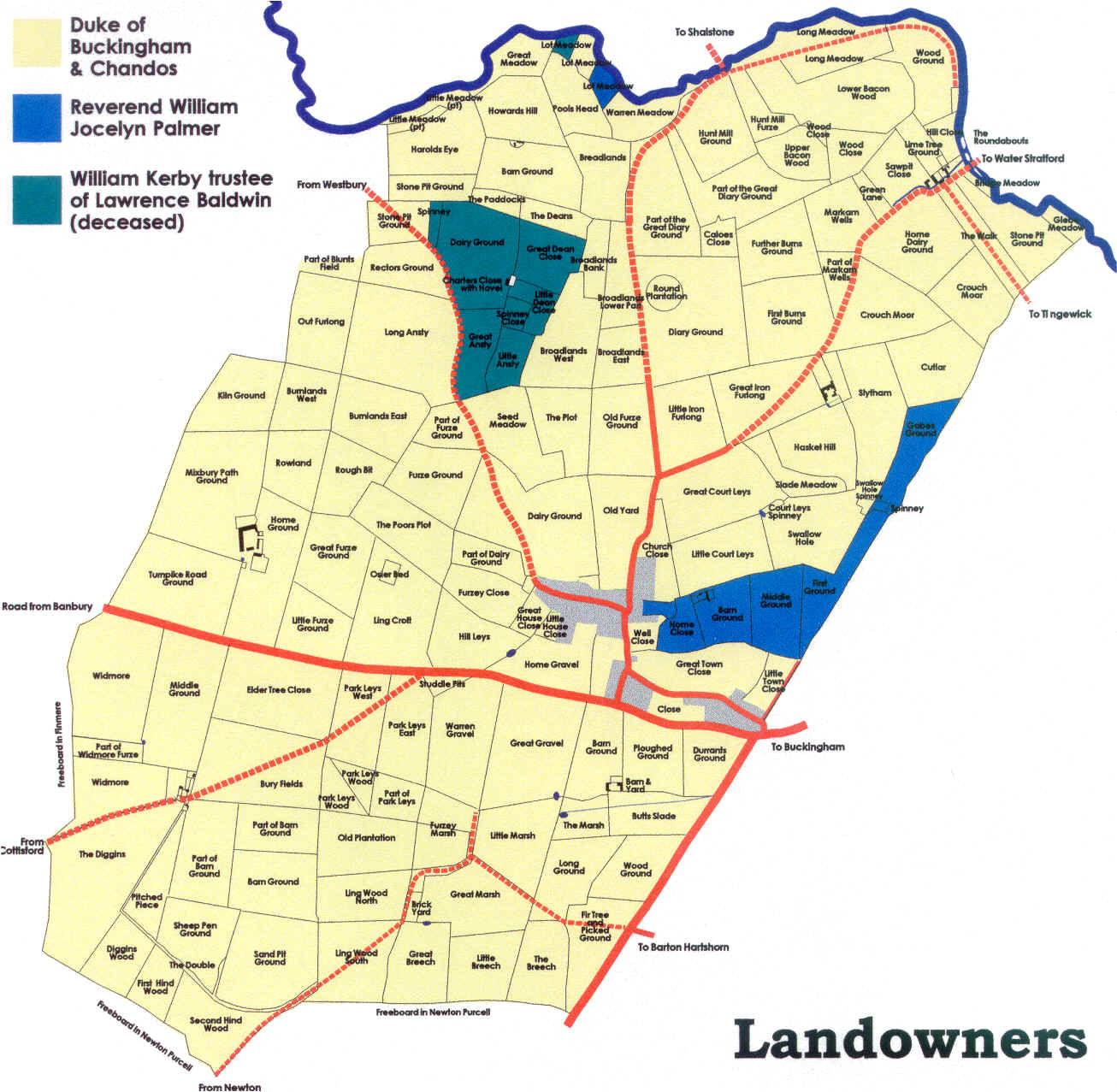
Finmere Records at the Huntington: Landowners
From 1753 to 1853, Finmere was part of the Stowe estate, which itself was at one point part of 58,000 acres [23,400 hectares] owned by the Grenville-Temple family. By the 1840s, the Temple-Grenvilles owned most of Finmere.
The Grenvilles of Wotton, near Aylesbury, and the Temples of Stowe assiduously accumulated marriages, estates and government service to ensure their advance through the aristocracy. In 1710, their ambitions were brought together through the marriage of Richard Grenville and Hester Temple. After further acquisitions, marriages and political service, their dynasty was eventually rewarded with a long coveted Dukedom in 1822. But even as the Dukedom was awarded, poor estate management and avarice were decimating the family wealth. Bankruptcy quickly followed in 1848 and the title of Duke of Buckingham and Chandos was extinguished with the death of the third Duke in 1889.
In 1547, the manor of Finmere had become the sole possession of John Blundell, a mercer of London, who had purchased all the land in the parish, with the exception of the glebe, which was owned by Rector Ralph Ponsonby. At his death in 1559, Blundell’s land was divided between his three daughters, two of whose sons sold their inheritance. These sales allowed John Temple of Stowe to buy one portion of Finmere in 1602 and his son, Sir Thomas Temple, to buy a second portion in 1614.
In 1753, Richard Grenville-Temple had an opportunity to purchase a third part of Finmere, which had passed from Thomas Waller to Edward Bacon of Bacon’s House. With this purchase, the Temples’ owned the majority of Finmere land.
Nearly two centuries later, Richard Temple was created Duke of Buckingham and Chandos in 1822. Even as he achieved this status, however, the family was struggling financially. As the financial problems rapidly worsened, trustees were appointed to protect the interests of family and creditors, and to settle disputes between father and son. The Duke and his son spent much of the 1830’s renegotiating their mounting debts. Remote estates in Ireland, Somerset and elsewhere were sold to repay the main debts. The core Buckinghamshire estate was consolidated and Stowe was planned be a hub that generated money to support the family and repay remaining debts. As part of this strategy, further land in Finmere was purchased in the 1820s and 1830s.
The family’s financial woes, however, could not be hidden. On 30 August 1847, bailiffs smashed their way into Stowe House; they were acting on behalf of creditors determined to recover at least some of their funds. By April 1848, the second Duke’s debts were estimated at £1,094,000. On 10 May 1848, Finmere was offered for sale at Garroway’s coffee house in London. The asking price was £30,000 but the highest bid was just £27,700. To disguise the failure to sell, Finmere was ‘brought in’ by the auctioneers at £31,300. The land was later privately sold to Merton College in 1853 and other purchasers.
During August and September 1848, the contents of Stowe House were sold. The books and manuscripts from the magnificent library were sold in 1849. When the third Duke inherited Stowe in 1862, there was little left. He had no sons and the Dukedom of Buckingham and Chandos was extinguished with his death in 1889. Stowe House was sold in 1921 and became a school in 1923.